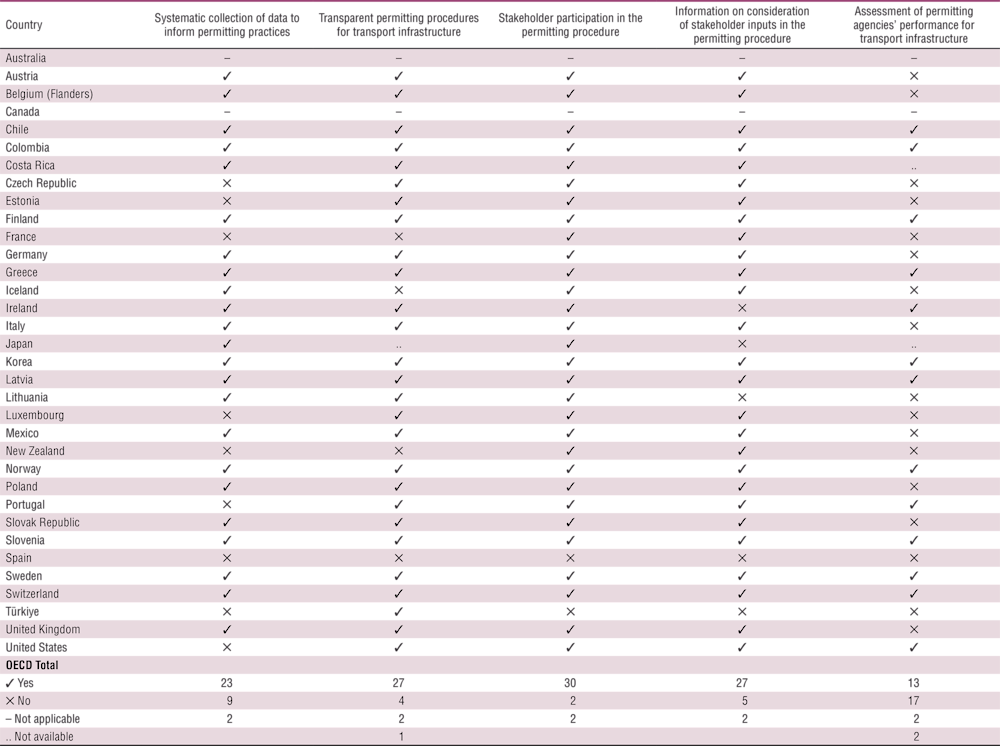Public infrastructure projects often involve large amounts of financial resources and take many years. They need to operate under regulations that contribute to optimising their lifespan and costs, assess risk exposure, and build resilience. The OECD Recommendation on the Governance of Infrastructure highlights that a coherent, predictable, and efficient regulatory framework encourages investment in public infrastructure, and ensures the delivery of ongoing improvements in the quality of infrastructure services.
The OECD Infrastructure Governance Indicator (IGI) on regulatory frameworks for public infrastructure provides an overview of countries’ performance in promoting efficient regulatory frameworks and permit procedures, and ensuring good governance (i.e. independent and accountable economic regulators). Across OECD countries, indicator values range widely from 0.43 to 0.81 with an average of 0.64 (Figure 8.3). On average, countries score higher for governance of economic regulators (0.71) and permitting practices (0.64). The regulatory framework sub-pillar has the lowest average score (0.58) as many countries lack dedicated mechanisms to facilitate access to and review of regulations relevant to infrastructure, and co-ordination between regulatory bodies and across levels of government could be further improved.
As many OECD countries accelerate infrastructure projects to promote the green transition, most have become aware of the importance of transparent, predictable, coherent and efficient permit procedures. Streamlined procedures have been identified as a priority to speed up the renewable energy transition (McKinsey, 2022). Twenty-three out of 32 OECD countries (72%) systematically collect data to inform permit practices, while 27 out of 31 (87%) have transparent processes allowing the public to track progress in issuing permits for transport infrastructure. Similarly, almost all countries (30 out of 32 or 94%) have created mechanisms to provide relevant information and invite citizens and stakeholders to comment on permit applications before a decision is made. For example, in the United Kingdom, most local planning authority applications require public notice and enough time for the public to provide feedback. In most of these countries (27 out of 32 or 84%), stakeholders are informed on how and why their input has been considered in the permitting procedure (Table 8.4).
While most OECD countries have adopted good practices in promoting transparency and stakeholder participation, more could be done to increase the accountability of permitting agencies. Currently, only 43% of OECD countries (13 out of 30) have put in place mechanisms to measure and assess permitting agencies’ performance against regulatory goals (based on outcomes rather than on outputs) in the transport sector (Table 8.4). For example, the United States’ Department of Transportation is required to establish a performance accountability system to track the environmental review and permit process for each major project.


